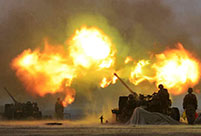 Top 100 beauties in the world!
Top 100 beauties in the world!
 Gallery: Who is the most beautiful one?
Gallery: Who is the most beautiful one?
 If you like autumn, put your hands in the air!
If you like autumn, put your hands in the air!
 Fan Bingbing's "Queen style" in new play
Fan Bingbing's "Queen style" in new play
 Lingerie show at 2014 Miss China
Lingerie show at 2014 Miss China
 J-10 fighters show aerobatic stunts in smog-free sky
J-10 fighters show aerobatic stunts in smog-free sky
 Charming contestants of Shanghai Int’l Model Contest
Charming contestants of Shanghai Int’l Model Contest
 Most amazing chi-pao beauties
Most amazing chi-pao beauties
 7 deadly animal attacks
Russia to launch 70 Proton rockets by 2020: official
7 deadly animal attacks
Russia to launch 70 Proton rockets by 2020: official
 |
| Executive Director of the APEC Secretariat Alan Bollard (File Photo) |
Related:
Alan Bollard on China, FTAAP, New Silk Road (Full interview) 
Elite Talk: APEC and China's New Silk Road 
One of the biggest headlines for this year's APEC meetings is the Free Trade Area of the Asia-Pacific (FTAAP).
Unlike the US-led 12-member Trans-Pacific Partnership (TPP), which excludes China, and the ASEAN-led 16-member Regional Comprehensive Economic Partnership (RCEP), which excludes the U.S., the proposed FTAAP is a wider free trade initiative embracing all of the 21 APEC economies.
Crafting a roadmap for the realization of the APEC-wide free trade pact is widely recognized as an important concrete step toward greater economic integration in the Asia-Pacific region.
Alan Bollard is the Executive Director of the APEC Secretariat and former Governor of the Reserve Bank of New Zealand. He joined our Elite Talk program to talk about the FTAAP and the trade landscape in the Asia-Pacific. Here's our talk.
Host: The FTAAP has been talked about for many years, but has not progressed as fast as some regional FTAs, such as the US-led TPP and the ASEAN-led RCEP. So, based on your inside knowledge and expertise, the proposed FTAAP, TPP and RCEP, which one do you think will be the future?
Bollard: Well, I think that depends on how far you look. I know that China is doing a lot of work, looking at the FTAAP. FTAAP has been cited as a possibility for some years, but really at the moment it’s only a vision, and we want to work out what it might actually mean. We know that it’s a long-term objective. It won’t suddenly reach FTAAP. But we do see that as being the big goal out into the future.
China this year would like to bring FTAAP to our attention, and probably agree to work on a study that will help us understand what it means; when we might achieve it; how we might achieve it; and what paths would be followed to get there; could this be the Trans Pacific Partnership (TPP), the Regional Comprehensive Economic Partnership (RCEP), or a different stepping stone. It’s still a work in progress.
Host: But for the benefits of the entire Asia-Pacific region, in your opinion, which trade pact should the 21 APEC economies really engage in, regardless of any political factors?
Bollard: Well, they have all seen it. They said in the past that we are moving towards FTAAP. That’s already been said. But we don’t know enough about what that means yet, and China wants to clarify all that. At the moment, the only negotiations are RCEP and TPP. Indeed, we cannot be sure about what those mean, because it’s still too early to know what’s in the material. Maybe TPP will be concluded this year, but it’s still not secure.
Host: Just as you said, the FTAAP is certainly still a vision, but do you think it’s feasible?
Bollard: Yes, but it will take some time, and it will take a lot of commitment from leaders for us to get there. So, I think it is achievable, but it will be somewhere in the future. What is quite possible is that TPP and RCEP will both need to be concluded first.
>>中文版:亚太自贸区与亚太未来贸易格局








 Standard faces for each countries
Standard faces for each countries Photos: Xi Jinping in Fujian
Photos: Xi Jinping in Fujian China-made military transport aircraft gets ready
China-made military transport aircraft gets ready World Pole Dance Championship in China
World Pole Dance Championship in China Shocking! Photos of Chinese fighters revealed
Shocking! Photos of Chinese fighters revealed 59-year-old Liu Xiaoqing still looks stunning
59-year-old Liu Xiaoqing still looks stunning  In pics: PLA stages live-fire drill in NE China
In pics: PLA stages live-fire drill in NE China  Post-85s female pilots and their mission
Post-85s female pilots and their mission Netizens fall in love with champion swimmer Ning Zetao
Netizens fall in love with champion swimmer Ning Zetao Top 10 most dangerous jobs in the world
Top 10 most dangerous jobs in the world  Top 10 fifth generation jet fighters in the world
Top 10 fifth generation jet fighters in the world Top 10 Chinese goddesses
Top 10 Chinese goddesses  Top 20 hottest women in the world in 2014
Top 20 hottest women in the world in 2014 Top 10 pure beauties in showbiz
Top 10 pure beauties in showbiz  Top 10 world's highest-paid models 2014
Top 10 world's highest-paid models 2014 The most gorgeous Chinese women
The most gorgeous Chinese women Top 10 most handsome faces in Asia
Top 10 most handsome faces in AsiaDay|Week|Month